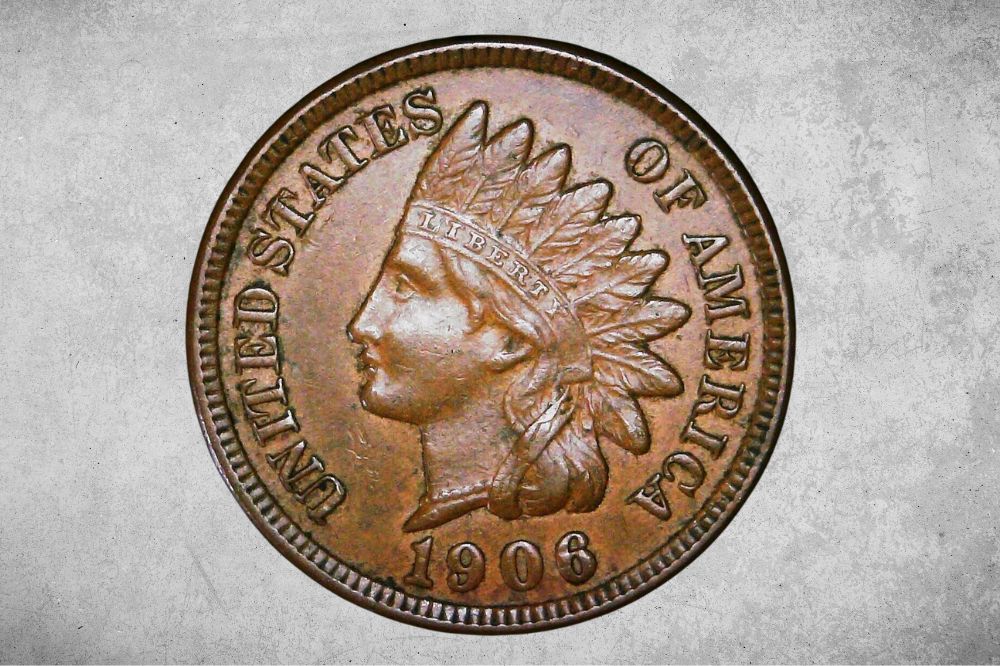Did you come across one of the Indian Head pennies produced in 1906? Are you interested in buying one or more of these wonderful coins?
If so, you are at the right place. Continue reading to find out everything you need to know about the 1906 Indian Head penny value, errors, fun facts, history, most commonly asked questions about it, and much more.
1906 Indian Head Penny Value Details
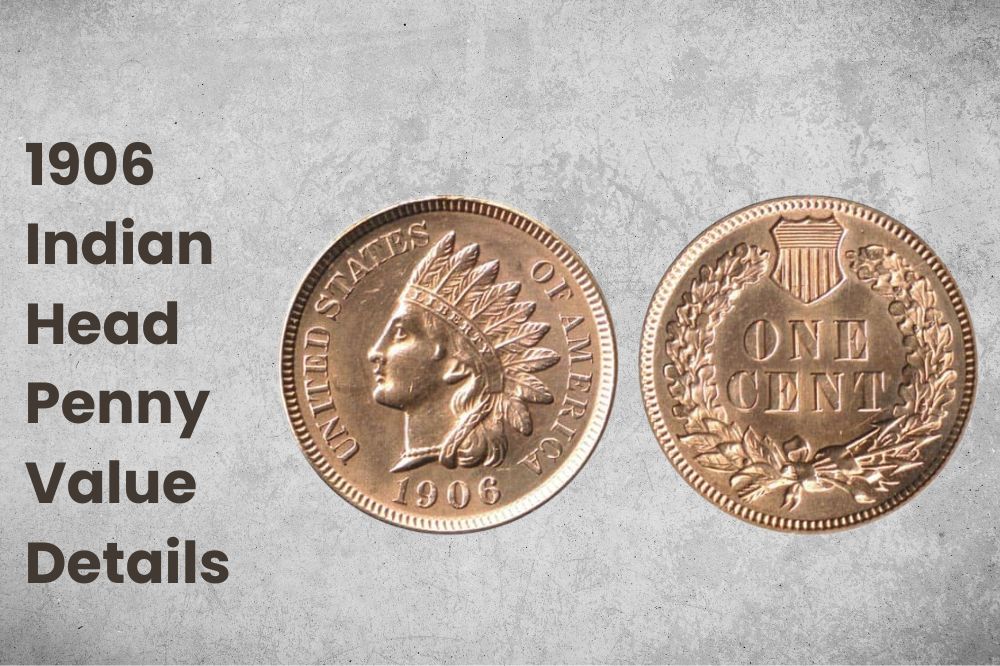
- Category – Indian Head pennies
- Mint – Philadelphia
- Total mintage – approximately 90 million
- Obverse designer – James Barton Longacre
- Reverse designer – James Barton Longacre
- Composition – 95% copper, 5% tin, and zinc
- Weight – 3.11 grams (0.10 ounces)
- Diameter – 19 millimeters (0.74 inches)
Indian Head pennies produced in 1906 were minted in the Philadelphia mint. This US mint did not produce mint marks, so you will not find one on any of these coins. There were a total of over 90 million coins minted this year.
Since there were so many coins put into circulation, the Indian Head penny from 1906 is not particularly rare. There are still a lot of these beautiful pennies out there, with prices ranging from only a few cents to thousands of dollars.
The Indian Head penny from 1906 is valued based on its overall condition, rarity, potential mint errors, and collectors’ interest. The rarest and most priced specimens are those that look like they just exited the mint, but those are very difficult to find.
A lot of the pennies are already distributed to numismatists, collectors, and investors. This is why you will probably have to pay a lot of money if you want to buy a coin in mint condition, but you are lucky if you come across one and want to sell it.
Also Read: Top 15 Most Valuable Indian Head Penny Worth Money
1906 Indian Head Penny Value Chart
An Indian Head penny produced in 1906 had a face value of one cent. Nowadays, it is usually worth more than that, even if the coin is in poor condition.
Unless your coin looks like it was just minted, you cannot expect to get a lot of money for it. Those in fair, about good, very good, fine, very fine, and extremely fine condition are worth up to around $10.
The prices start to significantly rise when the coin looks uncirculated. If it is in mint state with a grade of 64 and more, you can sell or buy it for a hundred to a couple of thousands of dollars.
| 1906 Indian Head Penny No Mint Mark Value | |
| Poor | $0.50 – $1 |
| Fair | $1 |
| About Good | $1.50 |
| Good | $2 |
| Very Good | $3 |
| Fine | $3 – $4 |
| Very Fine | $6 |
| Extremely Fine | $10 |
| About Uncirculated | $25 – $40 |
| Mint State (60-63) | $40 – $90 |
| Mint State (64+) | $100 – $2 000 + |
1906 Indian Head Penny Value & Varieties Guide
The mints in the US were active during the beginning of the twenty-first century. The mints that produced most coins were in Philadelphia, San Francisco, New Orleans, and Denver.
However, this particular penny was only minted in Philadelphia, which is why it doesn’t contain a mint mark. Let’s learn more about this coin.
1906 Indian Head Penny No Mint Mark Value
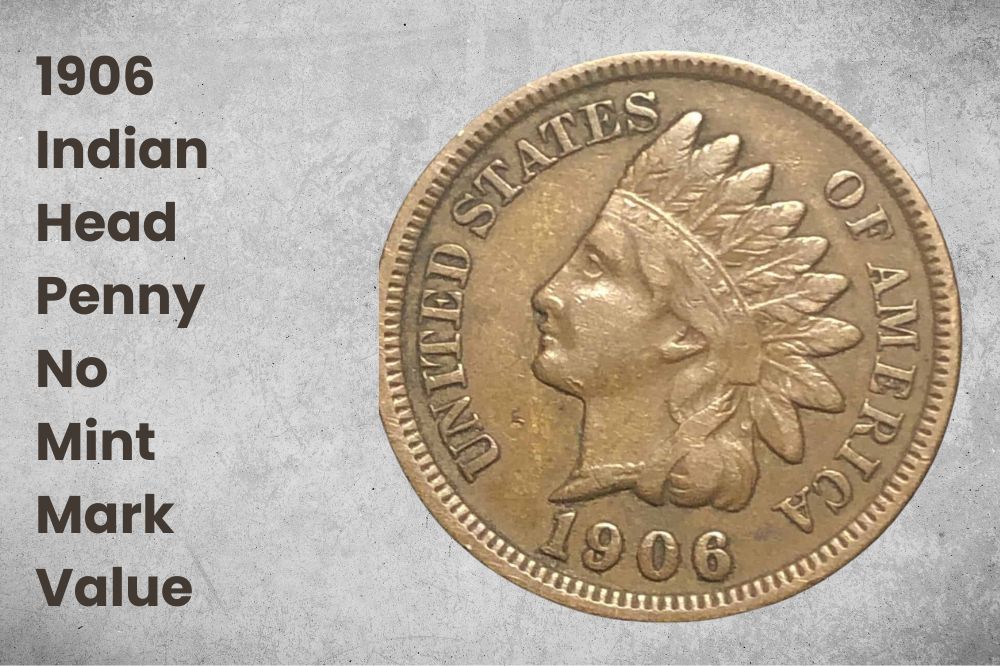
- Type – Indian Head penny
- Edge – plain
- Mint mark – no mint mark
- Place of minting – Philadelphia
- Year of minting – 1906
- Face value – 1 cent
- Price – $0.50 – $2 000 +
- Quantity produced – over 90 million
- Designer – James Barton Longacre
- Composition – 95% copper; 5% tin and zinc
- Mass – 3.11 grams (0.10 ounces)
- Diameter – 19 millimeters (0.74 inches)
The Indian Head penny that was minted in 1906 is mostly made of copper as it contains 90% of it. The rest of the coin is zinc and tin. This means that the coin doesn’t have value by itself because it doesn’t have any silver, gold, or other valuable metals.
The Philadelphia mint produced over 90 million of these coins in 1906, which is why Indian Head pennies from this year are actually very common. Sure, a lot of them were lost over time, but there are still many preserved out there.
The Indian Head penny produced in 1906 is one of the most beautiful pennies from this era. It is reddish because of its composition.
The front side features Lady Liberty wearing a headdress that is associated with Native Americans, which is where the coin gets its name. The date is engraved under Lady Liberty. The words UNITED STATES OF AMERICA are circled around the plain edges of the coin.
The back side of the coin has a wreath right by the edges and a shield at the top of the cent. Inside the coin is the denomination, depicted by the words ONE CENT.
This penny is quite small, with a diameter of only 19 millimeters and a weight of 3.11 grams.
Its price can range from only half a dollar to thousands of dollars, so it is very difficult to determine what the price of a coin is without letting a professional examine it.
The Philadelphia mint produced a few thousand proof coins, made not for putting into circulation, but specifically for distribution to collectors and investors. These coins are made with higher quality than regular ones.
It is difficult for a layman to differentiate proof coins from the basic ones, but if you do have one of these in good condition, you can probably sell it for several hundred dollars.
Also Read: Top 20 Most Valuable Old Pennies Worth Money (Penny Collection)
1906 Indian Head Penny History
Indian Head pennies were produced for fifty years, starting in 1859. Although the design of the coin itself is as simplistic as it is beautiful, there were some controversies surrounding it.
While the coin was supposed to honor the Native American culture and heritage, many thought that the design was insensitive and that it represented cultural appropriation. Despite this, the coin was in circulation for fifty years, so it was quite successful.
The man behind the design is a man named James Longacre. He served as a Chief Engraver of the US mint until his death, for more than twenty years. He designed several well-known coins, some of which were used for years after he passed.
While some of the Indian Head pennies were minted in several different locations across the US, the coins from 1906 were produced only in Philadelphia.
Usually, Philadelphia produced more coins than other mints, so if a coin has an S, O, D, or some other mint mark, it is normally more valuable. In the case of the Indian Head penny from 1906, you will not find a penny with a mint mark.
Therefore, the only factors that affect the price of this coin are its condition, rarity, and interest among the numismatists.
The Indian Head penny saw some of the most important events and periods of US history. These include Civil War, economic depression, slavery abolishment, Vietnam war protests, and so many more. This makes it a significant part of the history of the United States.
Nowadays, this coin is much more valuable than it was while it was circulated. Many numismatists have it in their collections. It is worth having it in yours even when it is not worth as much simply because of its unique and beautiful design.
1906 Indian Head Penny Grading
Indian Head penny from 1906 is, like most other coins, evaluated on a scale from 1 to 70, with grades ranging from poor to mint. Even when this coin is in the poorest condition, it is still worth more than its face value.
When it gets a grade of 60 and more, it can reach the price of thousands of dollars.
1906 Indian Head Penny Errors
As efficient and reliable coin factories are, they often make mistakes. Such mistakes can raise the price of your coin by a lot because the errored coins are rare and difficult to come by.
In order for your coin to have more value because of an error, the error has to be noticeable enough but not too severe that you can’t see almost any engraved words or pictures on the coin.
Some of the errors are not even visible to a layman or the naked eye. You will need to hire a professional to examine your 1906 Indian Head penny because who knows? It may carry an invisible error that can get you rich in a matter of days.
The professional that examines your penny will also need to figure out whether your coin has been defective over time or if the mistake indeed comes from the factory.
Let’s learn about some of the most common errors that you may sport on your Indian Head penny from 1906.
1. 1906 Indian Head Penny Double Die Obverse
Dies are the machines that engrave pictures and words onto the coins. When they malfunction, a planchet may get struck more than once, resulting in a double die error.
In the case of the 1906 Indian Head penny, this error is most commonly found on the obverse or front side of the coin. It may be less or more noticeable but it can increase the price of your coin, so it’s worth looking into it.
2. 1906 Indian Head Penny Double Date
This error occurs the same way the double die error happens. When the dies strike the date twice, you may notice a double year on the front side of your penny.
This error can also look like a misshapen or blurred date, which can also happen over time with the wear and tear of a coin. It’s important to learn whether your coin was like that ever since it left the factory or if over a hundred years of circulation caused such an appearance.
3. 1906 Indian Head Penny Die Breaks
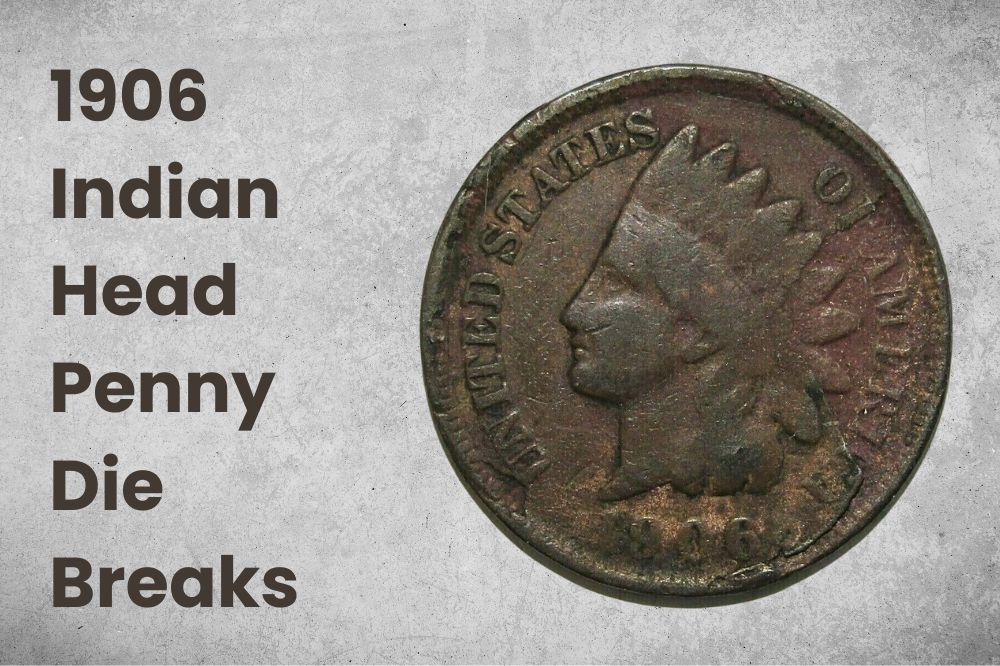
Dies can wear off over time and they can develop small cracks on them. This can cause the picture they engrave to become irregular.
In the case of this error too, this can happen naturally over time and it can be difficult to discern the factory error from natural damage to the coin.
4. 1906 Indian Head Penny Off-Center Strike
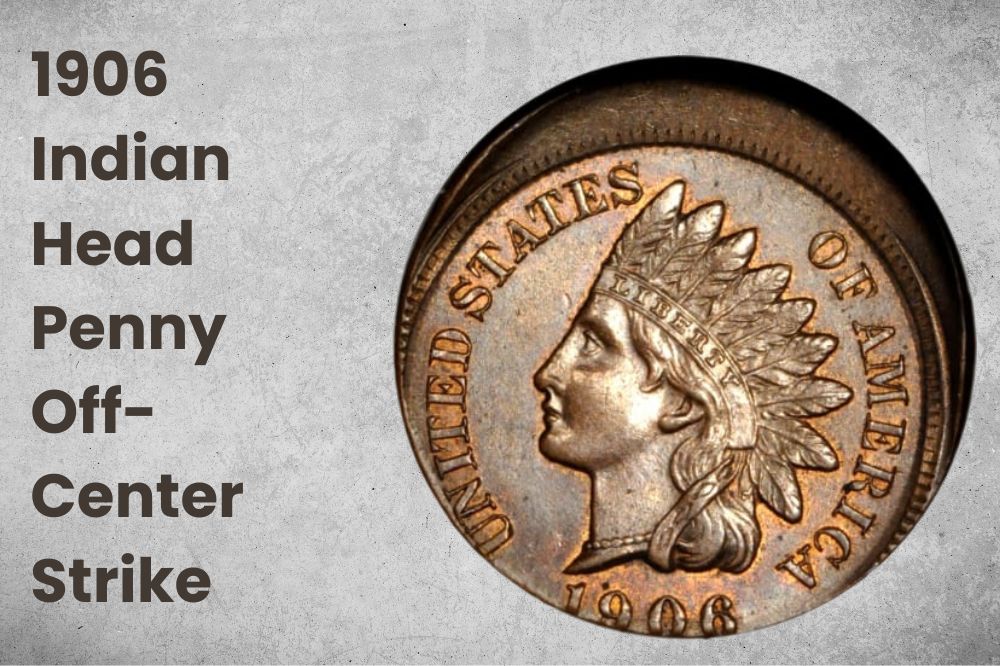
This is one of the most common mistakes in most coins produced by the US mint.
An off-center strike occurs when the coin is not placed well in the machine. Therefore, when the dies strike, they don’t cover the whole area of the coin, causing it to lose parts of the design and words.
1906 Indian Head Penny FAQ
Where Can I Find a 1906 Indian Head Penny?
You can find a 1906 Indian penny online – plenty of collectors sell their items using websites such as Amazon and eBay, so they are worth checking out.
If I Find a 1906 Indian Head Penny, Should I Clean It Before Getting It Graded?
It’s better not to clean your newly-found 1906 Indian Head penny if you don’t have previous experience with it. Cleaning it can cause it to get damaged, and you don’t want that before you take it for grading. Leave it as it is or take it to a professional.
Is the 1906 penny rare?
1906 Indian Head pennies are not that rare. There were a total of 90 million of these coins minted back in the day. However, most of these pennies that are in good condition are already taken by collectors and numismatists. This is why it may be difficult to find one.
What Indian Head penny is worth a lot of money?
Many of the Indian Head pennies can be worth a lot of money. The rarest of the Indian Head pennies are the ones made in 1877 because there were less than a million of them put into circulation.
However, any penny that you have can be worth a lot of money if it is in perfect condition.
How can you tell if an Indian Head penny is fake?
One of the most telling signs that an Indian Head penny is fake is a weird and misshapen picture, words, and numerals on the coin. You can compare it to a picture you find on the Internet and some of the bad fakes will be obvious right away.
However, keep in mind that some of the fake coins can be very convincing. If you are not an experienced numismatist, you will not be able to notice a fake. Always take your coins to a professional for careful examination.
